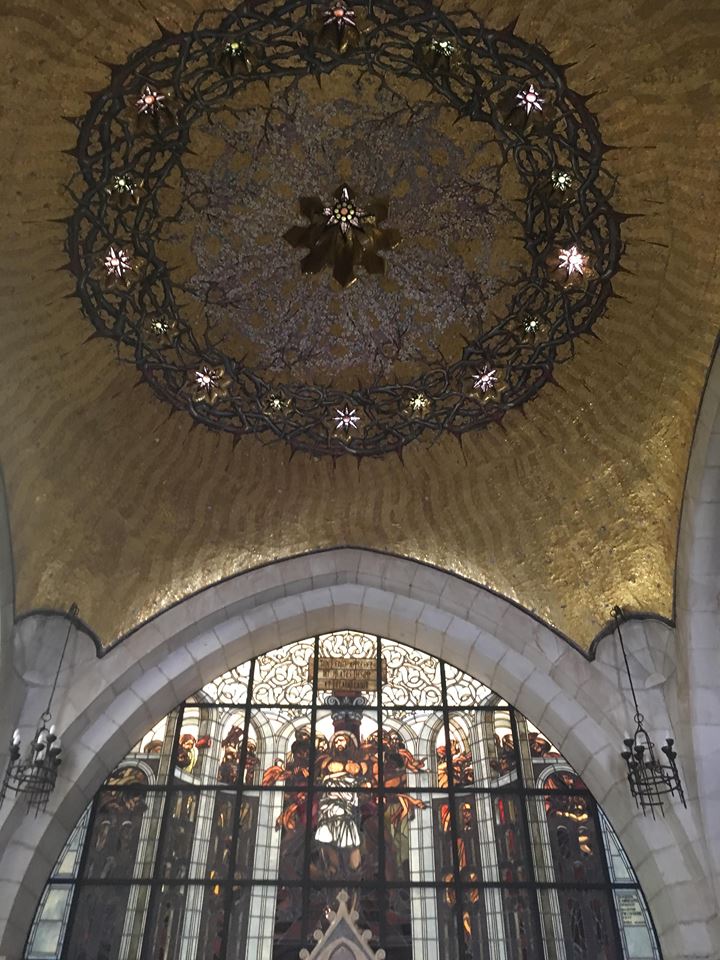
Yesterday, we followed the footsteps of Jesus by praying through the Stations of the Cross. It is called the Via Dolorosa, or the Way of the Sorrows, and it marks the path that Jesus took to Calvary, the place of his crucifixion and death. It starts near the Chapel of Condemnation, which is very close to the Chapel of Flagellation (see above), and ends at the Church of the Holy Sepulchre.

Christians have been following the fourteen Stations of the Cross as we know them today since the fifteenth century, and even earlier. They are marked with a Roman numeral on a bronze plaque. This particular spot (see above) marks the eighth station, where Jesus consoled the woman of Jerusalem.
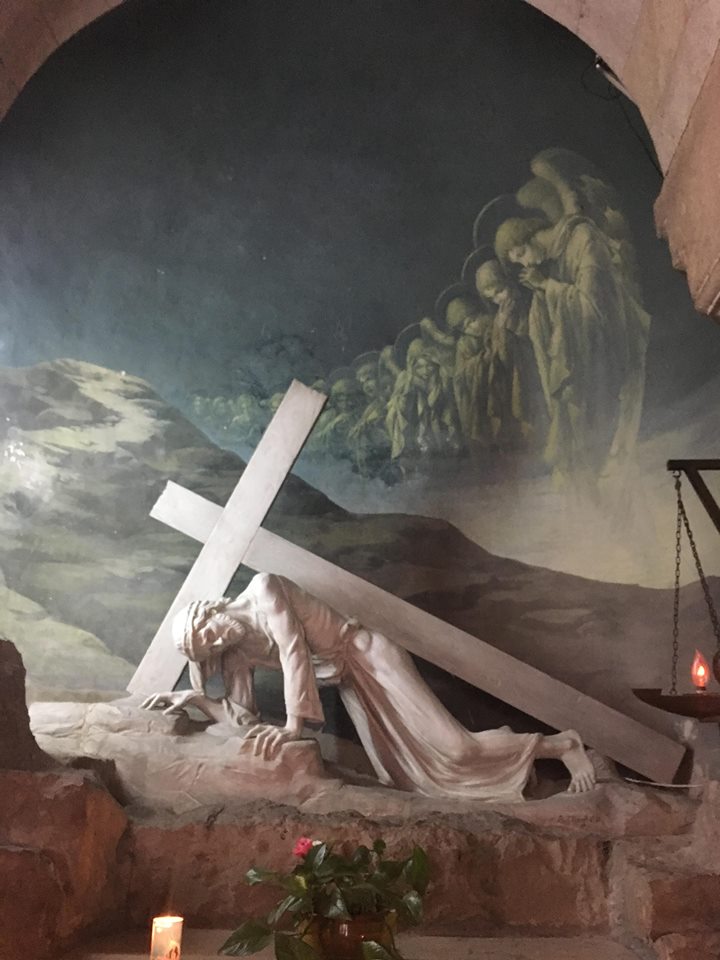
We began the stations around 11:00am, while the shops were already up and running. This made it interesting (to say the least), as the narrow streets were congested with shoppers, merchants, and loud noises. Eventually we made it to the Church of the Holy Sepulchre, and it too was packed with pilgrims and tourists! The crowds offered us a taste of what Jesus must have experienced as carried his cross to Calvary.
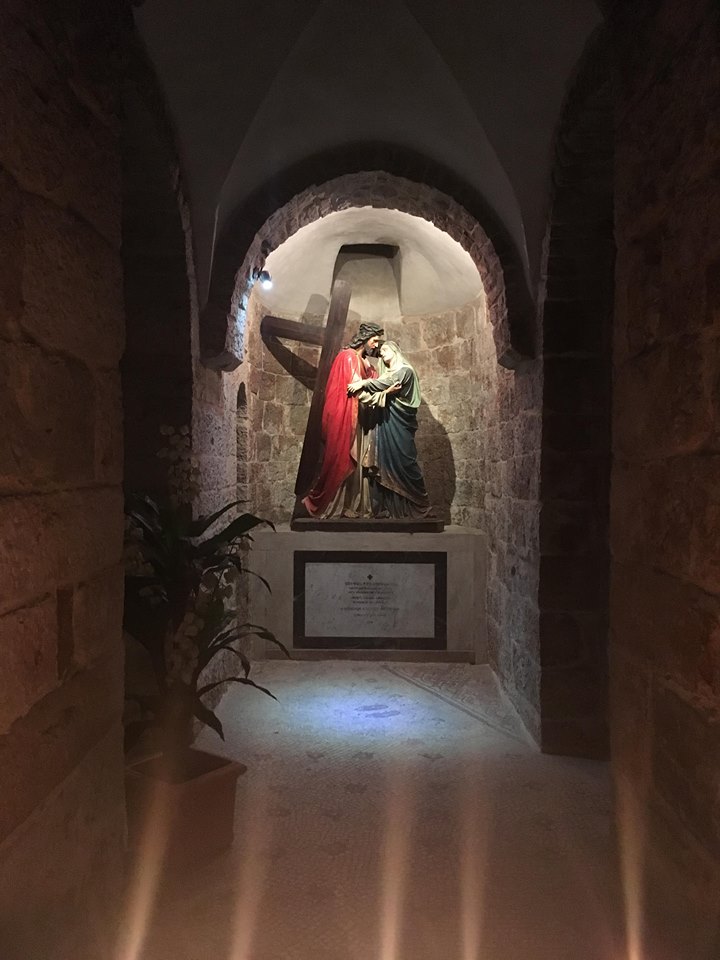
Of all the stops, the most peaceful place to pray was the Fourth Station, the meeting between Jesus and his Blessed Mother, Mary. The statue (see above) captures the scene beautifully, especially the tender sorrow between a mother and Son. It recalls the words of the “Stabat Mater,” the hymn used between stations. This particular verse speaks to the Blessed Mother:
Make me feel as you have felt: make my soul to glow and melt, with the love of Christ our Lord.
The Via Dolorosa ends at the Church of the Holy Sepulchre on Mount Calvary and finally, in the tomb. Pictured below is the chapel on top of Mount Calvary. It is a very sacred place, for it was here that Jesus died on the cross.
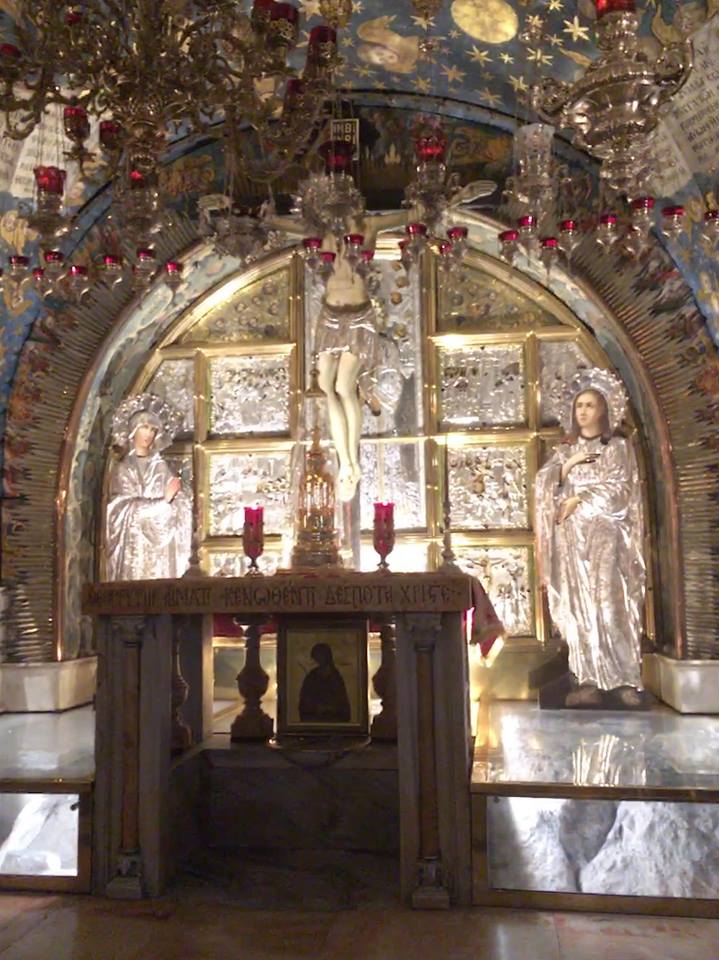
Walking in the footsteps of Jesus with my brother seminarians was a moving experience. It was especially beautiful to end at the tomb (see below), the Holy Sepulchre itself. The last station is the laying of Jesus in the tomb, and thanks be to God that this is not the end of the story. Jesus has risen from the dead, “Alleluia, Alleluia!”
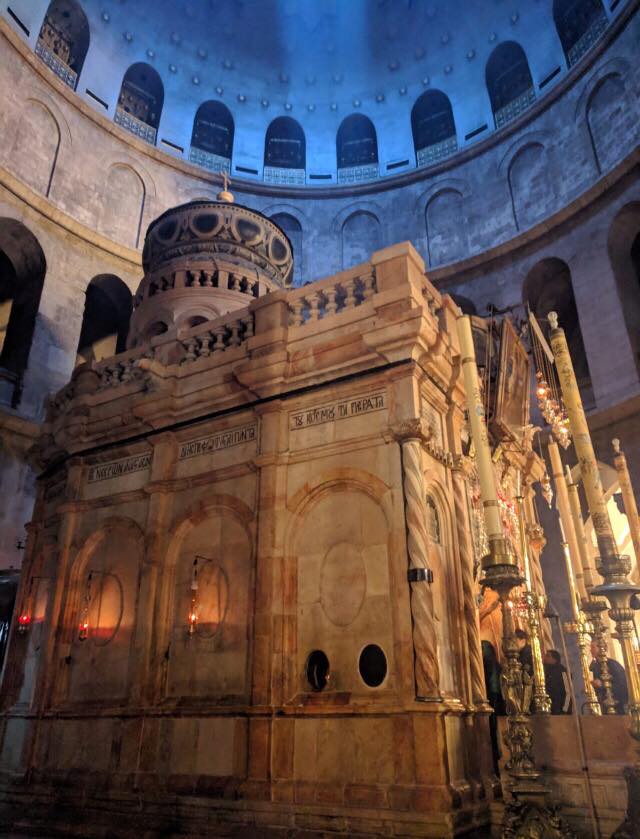
In closing, I would like to leave you with an address given by Pope Saint John Paul II in 1979, recommended to me by a good friend:
“I come to you as a servant of Jesus Christ, and I want to speak to you about him. Christ came to bring joy: joy to children, joy to parents, joy to families and to friends, joy to workers and to scholars, joy to the sick and to the elderly, joy to all humanity. In a true sense, joy is the keynote of the Christian message and the recurring motif of the Gospels. Recall the first words of the angel to Mary : “Rejoice, O full of grace, the Lord is with you” (Lk 1:28). And at the birth of Jesus, the angels announced to the shepherds: “Listen, I bring you news of great joy, joy to be shared by all people” (Lk 2:10). Years later as Jesus entered Jerusalem riding on a colt, “the whole group of disciples joyfully began to praise God at the top of their voices. ‘Blessed is the King who comes in the name of the Lord’ !” (Lk 19:37-38) . We are told that some Pharisees in the crowd complained, saying: “Master, stop your disciples”. But Jesus answered: ” I tell you, if they were silent, the very stones would cry out” (Lk 19:39-40).
Are not those words of Jesus still true today? If we are silent about the joy that comes from knowing Jesus, the very stones of our cities will cry out! For we are an Easter people and “Alleluia” is our song. With Saint Paul I exhort you: “Rejoice in the Lord always, I say it again, rejoice” (Phil 4:4).
Peace,
Tom Skaja
Prayer requests: skaj9494@stthomas.edu
